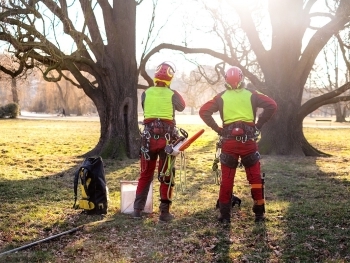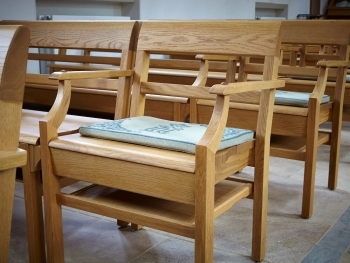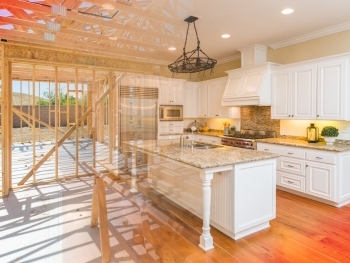In an era of heightened environmental awareness, the construction industry faces increasing pressure to adopt sustainable practices. With concerns about climate change, resource depletion, and environmental degradation on the rise, architects, engineers, and builders must prioritize eco-friendly building methods to mitigate their impact on the planet. This article delves into the principles and practices of eco-friendly construction, exploring how sustainable building techniques are implemented to ensure environmentally responsible projects.
Understanding Sustainability in Construction: Sustainability in construction involves meeting the needs of the present without compromising the ability of future generations to meet their own needs. This encompasses various aspects, including reducing carbon emissions, conserving natural resources, minimizing waste generation, and promoting the health and well-being of occupants. Achieving sustainability requires a holistic approach that considers the entire lifecycle of a building, from design and construction to operation and eventual demolition or renovation.
Key Principles of Eco-Friendly Building:
- Energy Efficiency: One of the fundamental principles of eco-friendly construction is maximizing energy efficiency. This involves designing buildings that minimize energy consumption through features such as high-performance insulation, efficient HVAC systems, energy-efficient lighting, and passive solar design. By reducing energy demand, buildings can lower their carbon footprint and operating costs while enhancing comfort for occupants.
- Use of Sustainable Materials: Selecting environmentally friendly materials is crucial for sustainable construction. This includes using renewable resources such as responsibly harvested timber, recycled materials like reclaimed wood and recycled steel, and low-impact alternatives such as bamboo and cork. Additionally, choosing materials with low embodied energy— the energy required for their extraction, processing, and transportation— helps reduce environmental impact.
- Water Conservation: Conserving water is another vital aspect of eco-friendly building practices. This can be achieved through the installation of water-efficient fixtures, rainwater harvesting systems, greywater recycling, and drought-resistant landscaping. By reducing water consumption, buildings contribute to the preservation of freshwater resources and minimize the strain on municipal water supply systems.
- Waste Reduction and Recycling: Minimizing construction and demolition waste is essential for sustainable building projects. Strategies such as source reduction, material reuse, recycling, and waste management plans help divert materials from landfills and reduce environmental pollution. Furthermore, incorporating prefabrication and modular construction techniques can optimize material usage and minimize on-site waste generation.
- Indoor Environmental Quality: Prioritizing indoor environmental quality promotes occupant health and well-being while reducing environmental impact. This involves designing buildings with ample natural light, proper ventilation, low-VOC (volatile organic compound) materials, and optimal thermal comfort. Enhancing indoor air quality not only improves occupant satisfaction but also reduces the environmental burden associated with building operation.
Implementing Sustainable Practices in Construction: To ensure sustainability in construction projects, a multi-disciplinary approach involving architects, engineers, builders, and other stakeholders is necessary. Key strategies for implementing eco-friendly building practices include:
- Integrated Design: Adopting an integrated design approach, where architects, engineers, and builders collaborate from the project's inception, facilitates the incorporation of sustainable features into the building's design. This interdisciplinary collaboration allows for holistic decision-making that considers environmental, economic, and social factors.
- Green Building Certifications: Seeking green building certifications such as LEED (Leadership in Energy and Environmental Design), BREEAM (Building Research Establishment Environmental Assessment Method), or Green Star provides frameworks for evaluating and recognizing sustainable building practices. These certifications incentivize developers and builders to meet stringent sustainability criteria and demonstrate their commitment to environmental stewardship.
- Lifecycle Assessment: Conducting lifecycle assessments (LCAs) helps quantify the environmental impact of building materials and construction processes over the entire lifespan of a building. LCAs consider factors such as raw material extraction, manufacturing, transportation, construction, operation, maintenance, and end-of-life disposal. By identifying hotspots of environmental impact, stakeholders can prioritize interventions to minimize the building's overall footprint.
- Education and Training: Educating construction professionals about eco-friendly building practices and providing training on sustainable construction techniques is crucial for widespread adoption. Continuous professional development ensures that architects, engineers, and builders stay abreast of the latest advancements in sustainable design and construction methods, empowering them to implement environmentally responsible solutions in their projects.
- Community Engagement: Engaging with local communities and stakeholders fosters support for sustainable construction initiatives and promotes social responsibility. Incorporating community feedback, addressing concerns, and involving residents in the planning and decision-making processes enhance project transparency and accountability. Moreover, projects that prioritize community needs and aspirations are more likely to achieve long-term success and acceptance.
Case Studies of Sustainable Building Projects:
- Net-Zero Energy Office Building: This commercial office building incorporates energy-efficient design features such as passive solar orientation, high-performance glazing, rooftop solar panels, and advanced HVAC systems. Through careful planning and innovative technology integration, the building generates as much energy as it consumes on an annual basis, achieving net-zero energy performance and significantly reducing its carbon footprint.
- Green Affordable Housing Development: This affordable housing development utilizes sustainable materials, energy-efficient appliances, and water-saving fixtures to minimize environmental impact and promote affordability. Through public-private partnerships and community engagement, the project addresses social equity and environmental sustainability, providing safe, healthy, and energy-efficient housing for low-income residents.
- Adaptive Reuse of Historic Structure: This project involves the adaptive reuse of a historic warehouse into a mixed-use development comprising residential lofts, retail space, and community amenities. By preserving the existing structure and incorporating energy-efficient systems, the project reduces embodied carbon emissions associated with new construction while revitalizing the urban fabric and preserving cultural heritage.
Eco-friendly building practices are essential for creating a sustainable built environment that meets the needs of present and future generations. By integrating principles of energy efficiency, sustainable materials, water conservation, waste reduction, and indoor environmental quality into construction projects, stakeholders can minimize environmental impact, enhance occupant well-being, and contribute to global efforts to combat climate change. Through collaborative efforts, innovative technologies, and a commitment to environmental stewardship, the construction industry can lead the way toward a more sustainable future.




